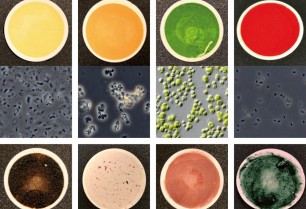We barely glimpse them using modern technologies and have little hope of traveling within the timescale of a human lifespan to even the next-nearest known planet (which happens to belong to the Alpha Centauri system, just next door).
That’s why astronomers and biologists have now systematically measured and catalogued the chemical fingerprints of 137 different species of microorganisms. These scientists say they want this work to enable future astronomers look from afar and recognize life on exoplanet surfaces.
These results are available online, published in the Proceedings of the National Academy of Sciences (PNAS) on March 16, 2015, reports Business Insider.
Siddharth Hegde at the Max Planck Institute for Astronomy in Heidelberg, Germany led the research. In an interview with MPIA, he said:
“Single-celled microorganisms dominate the history of life on Earth: they have been residents of Earth’s surface for at least 3.5 billion years … whereas plants have only been around for the past 460 million years.”
For now, Hegde said, the 137 biosignatures make up “the most complete and diverse biosignature catalog to date.”
He said some of the microorganisms hail from the most extreme environments on Earth and that, taken together, the samples should allow for a cautious estimate of the diversity of biological colors on planets other than Earth.
Bottom line: Scientists have now measured chemical fingerprints for 137 different species of microorganisms, with the goal of enabling future astronomers to recognize life on planets outside our solar system.
More about:
















































